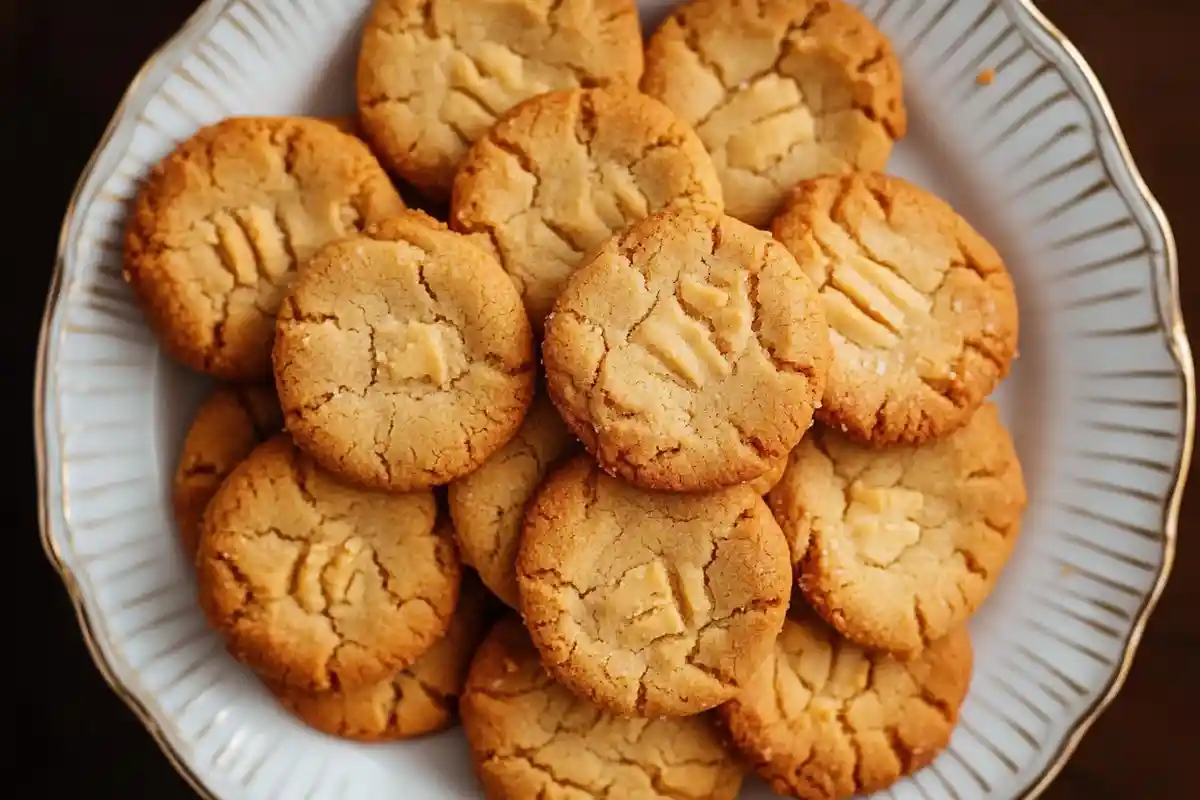Sourdough discard peanut butter cookies are a delightful twist on the classic cookie recipe, combining the nutty richness of peanut butter with the tangy depth of sourdough discard. Whether you’re an avid baker or looking to reduce food waste creatively, this recipe offers a delicious solution. The sourdough discard not only prevents unnecessary waste but also adds a unique tang that complements the sweetness of the cookies beautifully.
If you love experimenting with sourdough discard, don’t miss these delicious recipes:
- Sourdough Discard Dutch Baby or German Pancake – A fluffy, golden breakfast treat.
- Best Sourdough Discard Chocolate Chip Muffins Recipe – Soft, chocolatey muffins with a delightful tang.
- Homemade Sourdough Discard Cheez-It Crackers – Perfectly crunchy and savory snacks.
- Perfect Sourdough Discard Crepes: Easy Recipes & Tips – Thin, delicate crepes ideal for sweet and savory fillings.
Each recipe is packed with flavor and creativity—perfect for making the most of your sourdough discard.
This guide will walk you through every aspect of making these cookies, from the key ingredients to step-by-step instructions, troubleshooting tips, and frequently asked questions. So, if you’re ready to turn your sourdough discard into something irresistibly delicious, let’s dive in!
Table of Contents
Introduction to Sourdough Discard Peanut Butter Cookies
What Are Sourdough Discard Peanut Butter Cookies?
Sourdough discard peanut butter cookies are a delicious way to repurpose the leftover starter that often goes to waste during the sourdough feeding process. The discard, essentially unfed sourdough starter, brings a subtle tang to the classic peanut butter cookie flavor. This combination creates a rich, chewy cookie and bursting with character.
While peanut butter cookies are traditionally dense and nutty, the addition of sourdough discard elevates their texture and taste. The tang from the discard balances the sweetness, resulting in a more complex and intriguing flavor profile that will surely pique your interest.
But here’s the kicker: these cookies aren’t just about flavor but also about sustainability. Using discard reduces food waste, making these treats not only tasty but also environmentally friendly. By making these cookies, you’re contributing to a smaller environmental footprint and can feel proud of your responsible cooking choices.
Why Make Sourdough Discard Peanut Butter Cookies?
You might be wondering: Why bother adding sourdough discard to peanut butter cookies? The answer lies in both flavor and function.
First, sourdough discard adds a distinctive tang that enhances the nutty richness of peanut butter. It’s like a flavor party in every bite! Secondly, it provides extra moisture, ensuring your cookies stay soft and chewy long after they’ve cooled.
Beyond taste and texture, knowing you’re reducing waste is satisfying. Every spoonful of discard used in these cookies means less food waste and a smaller environmental footprint. Plus, they’re ridiculously easy to make and require no fancy equipment or techniques.
It’s a win-win, right? Delicious cookies and less waste—what’s not to love?
So, whether you’re a seasoned sourdough baker or just starting to experiment with discard recipes, these cookies are a must-try. Trust us, your taste buds (and your conscience) will thank you! And don’t worry, they’re ridiculously easy to make and require no fancy equipment or techniques, so you can be confident in your ability to create these delicious treats.
Ingredients and Substitutions
Key Ingredients for Sourdough Discard Peanut Butter Cookies
The secret to perfect sourdough discard peanut butter cookies is using the right ingredients. Each element plays a unique role in achieving that chewy texture, nutty flavor, and subtle tang. Here’s a breakdown of the essentials:
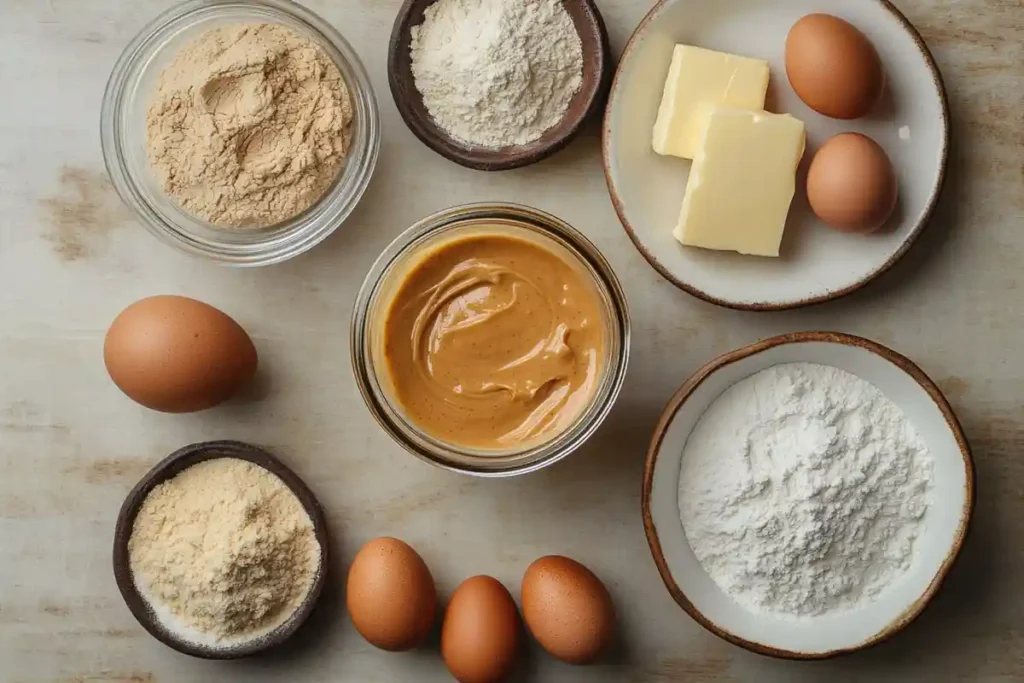
- Sourdough Discard: The star ingredient! Ideally, use unfed sourdough discard for a slightly tangy kick. Fresh discard works, but older discard offers a more pronounced sourness.
- Peanut Butter: Opt for natural, creamy peanut butter without added sugar or oils. It ensures a rich flavor and a smooth texture.
- Flour: All-purpose flour is your best bet. However, you can experiment with whole wheat or gluten-free flour blends.
- Sugar: A mix of brown and granulated sugar creates the perfect balance of chewiness and crisp edges.
- Eggs: Eggs act as a binding agent, holding everything together. Room-temperature eggs are best for even mixing.
- Butter: Unsalted butter adds richness and helps achieve that melt-in-your-mouth texture.
- Baking Soda: This leavening agent ensures the cookies rise just right without becoming cakey.
- Vanilla Extract: Just a dash enhances the overall flavor profile.
Each ingredient works in harmony, and skipping or replacing one without consideration could throw off the final result.
Ingredient Substitutions for Dietary Preferences
Do you have dietary restrictions? No worries—these sourdough discard peanut butter cookies are flexible enough to accommodate several substitutions:
- Gluten-Free: Swap all-purpose flour with a 1:1 gluten-free flour blend. Ensure your sourdough discard is gluten-free too!
- Nut-Free Alternative: Replace peanut butter with sunflower seed butter or tahini for a nut-free version.
- Sugar Alternatives: Use coconut sugar or maple syrup instead of granulated sugar. For sugar-free cookies, try monk fruit sweetener.
- Egg Replacement: Use flax eggs (1 tablespoon flaxseed meal + 2.5 tablespoons water per egg) for a vegan-friendly version.
These swaps allow everyone to enjoy the cookies without compromising flavor or texture. Whether vegan, gluten-intolerant, or just experimenting, there’s always a way to adapt the recipe.
Best Type of Sourdough Discard to Use
Not all sourdough discards are created equal! The type and age of your discard will influence the final cookie flavor and texture:
- Fresh Discard: Mild in flavor and slightly sweet. Ideal for those who prefer subtle tanginess.
- Aged Discard: Stronger tang and more complex flavors. Perfect if you enjoy a more pronounced sourdough presence.
- Hydration Level: Aim for a 100% hydration sourdough discard (equal parts water and flour).
If you’re unsure which discard to use, start with fresh discard for a milder cookie flavor. Over time, experiment with older discards to see what suits your palate best.
Tips for Preparing Ingredients
- Always bring eggs and butter to room temperature before mixing.
- Use smooth peanut butter for a consistent texture. Chunky peanut butter might make the dough difficult to handle.
- To avoid dense or overly crumbly cookies, measure ingredients accurately—especially flour and peanut butter.
By paying attention to these ingredient details, you’ll set yourself up for cookie success
Step-by-Step Recipe for Sourdough Discard Peanut Butter Cookies
Step 1: Preparing the Ingredients
Before diving into the cookie-making process, it’s essential to prep your ingredients properly. This small step can make a big difference in your final result.
- Room Temperature Butter and Eggs: Cold butter doesn’t cream well, and cold eggs can cause the batter to curdle. Leave them out for about 30 minutes before starting.
- Sourdough Discard: Stir your discard well to ensure an even consistency. It should be thick but pourable.
- Measure Accurately: Use measuring cups for dry ingredients and a kitchen scale for precise accuracy, especially for flour and peanut butter.
Prepping in advance minimizes errors and ensures a smooth baking experience.
Step 2: Mixing the Dough
Now, let’s bring the magic together!
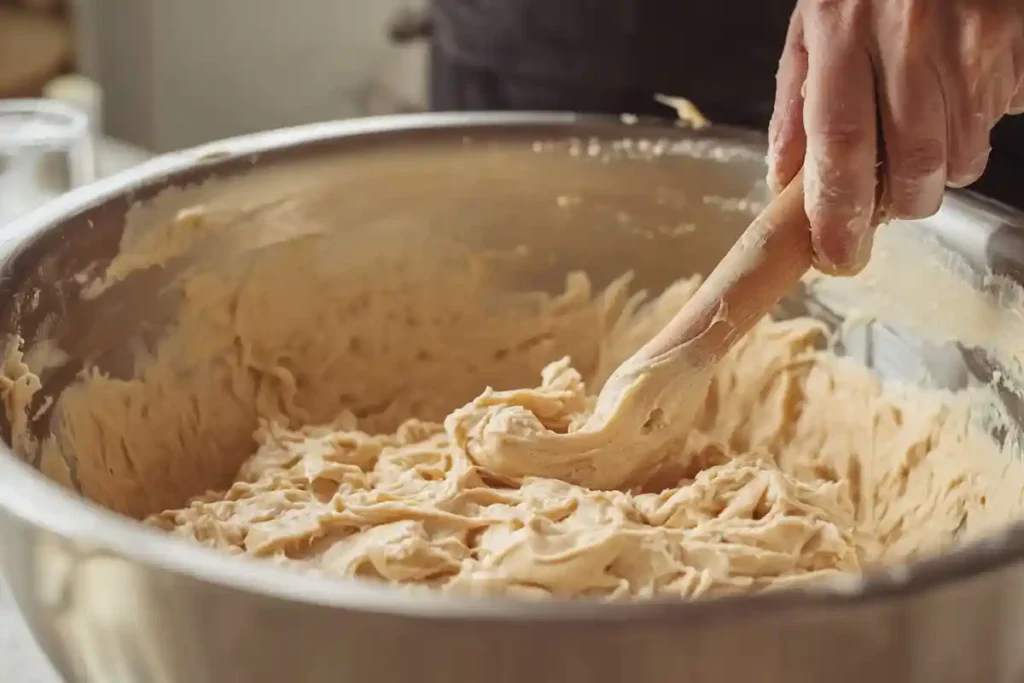
- Cream Butter and Sugars: In a large mixing bowl, beat butter, granulated sugar, and brown sugar until light and fluffy. It should take about 2–3 minutes with an electric mixer.
- Add Peanut Butter and Vanilla: Stir in peanut butter and vanilla extract. Mix until well combined and smooth.
- Incorporate Sourdough Discard: Gently mix in the sourdough discard. Don’t overmix—just enough to combine.
- Add Eggs: Crack in the eggs, one at a time, mixing well after each addition.
- Combine Dry Ingredients: Whisk together flour and baking soda in a separate bowl. Slowly fold these dry ingredients into the wet mixture.
Pro Tip: Avoid overmixing once the flour is added, as it can make the cookies tough instead of chewy.
Your dough should be soft, slightly sticky, and easy to handle.
Step 3: Shaping and Flattening the Cookies
Here comes the fun part—shaping those irresistible cookies!
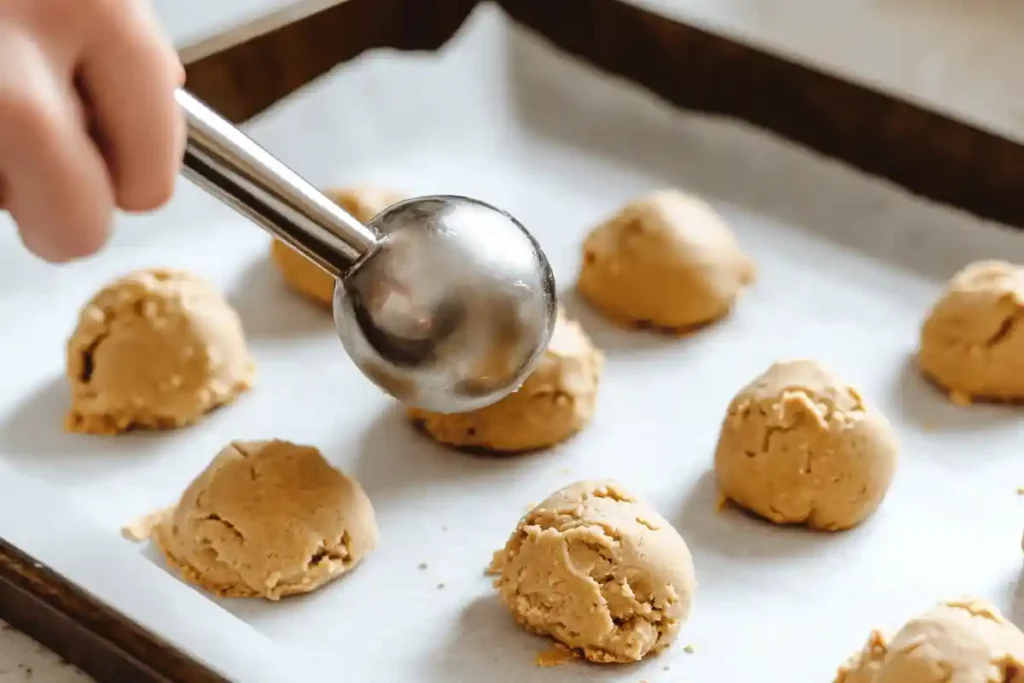
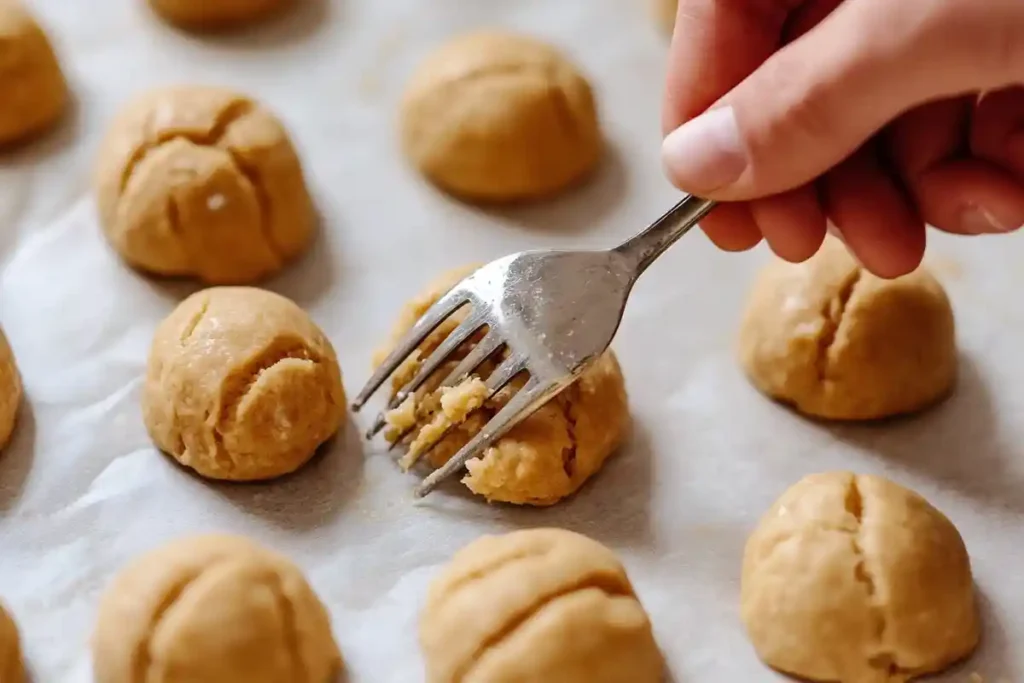
- Scoop the Dough: Use a cookie scoop or a tablespoon to portion out even-sized dough balls. Place them on a parchment-lined baking sheet.
- Flatten the Cookies: Gently press each ball with the back of a fork, creating a crisscross pattern. It not only looks classic but also ensures even baking.
- Chill the Dough (Optional but Recommended): For the best results, chill the shaped cookies in the fridge for about 30 minutes. It helps prevent them from spreading too much during baking.
Why Flattening Matters: The cookies may bake unevenly or remain too dense in the center if you skip flattening.
Step 4: Baking Tips and Techniques
The oven is where the real transformation happens. Follow these steps for perfectly baked cookies:
- Preheat Your Oven: Set it to 350°F (175°C). A preheated oven ensures even cooking.
- Bake the Cookies: Place the tray in the center of the oven and bake for 10–12 minutes. Keep an eye on them—the edges should be golden while the centers remain slightly soft.
- Rotate Halfway Through: Rotate the tray halfway through the baking time for uniform baking.
Pro Tip: Don’t overbake! After being removed from the oven, the cookies will continue cooking slightly on the hot tray.
Step 5: Cooling and Serving Suggestions
Once your sourdough discard peanut butter cookies are baked to perfection, follow these cooling and serving tips:
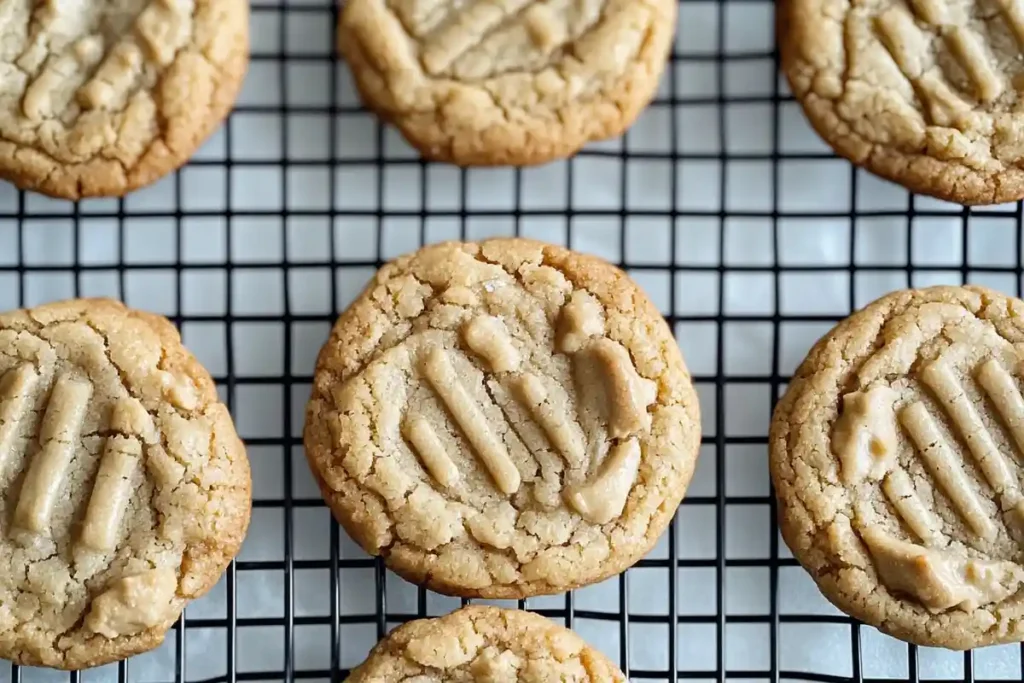
- Cool on the Tray: Allow cookies to cool on the baking sheet for about 5 minutes before transferring them to a wire rack.
- Complete Cooling: Let them cool on the rack to prevent soggy bottoms.
- Serve with Style: These cookies pair perfectly with a glass of cold milk, a warm cup of coffee, or even a dollop of vanilla ice cream.
Storage Tip: Store cooled cookies in an airtight container at room temperature for up to a week. For longer storage, freeze them in a resealable bag for up to 3 months.
Quick Recap for Success:
- Prep your ingredients properly.
- Mix carefully, avoiding overmixing.
- Chill the dough if possible.
- Flatten before baking.
- Don’t overbake.
Follow these steps, and you’ll have a batch of irresistibly chewy, nutty, and slightly tangy cookies that’ll disappear faster than you can say “Sourdough discard peanut butter cookies!”
Troubleshooting and Expert Tips
Common Mistakes When Making Sourdough Discard Peanut Butter Cookies
Even the most experienced bakers can run into hiccups when making sourdough discard peanut butter cookies. But don’t worry—most issues have simple solutions.
- Overmixing the Dough: Overmixing develops too much gluten, leading to tough, dense cookies. Solution: Mix just until the dry ingredients are incorporated.
- Using Cold Ingredients: Cold butter or eggs can cause uneven mixing and inconsistent texture. Solution: Always bring your ingredients to room temperature.
- Skipping the Flattening Step: Forgetting to flatten your cookie dough can result in cookies that are too thick or don’t bake evenly. Solution: Use a fork to create that signature crisscross pattern.
- Not Chilling the Dough (Optional): While not mandatory, chilling helps prevent the cookies from spreading too thin. Solution: If your dough feels too soft, pop it in the fridge for 30 minutes.
- Overbaking the Cookies: Overbaking leads to dry and crumbly cookies. Solution: Pull them out when the edges are golden, and the centers look slightly soft.
A little attention to detail can save your cookies from these common pitfalls. After all, baking is both an art and a science!
Tips for Achieving the Best Cookie Texture and Flavor
Let’s face it: sourdough discard peanut butter cookies are all about that perfect texture—chewy on the inside, slightly crisp on the edges, and bursting with flavor. Follow these expert tips to get it just right:
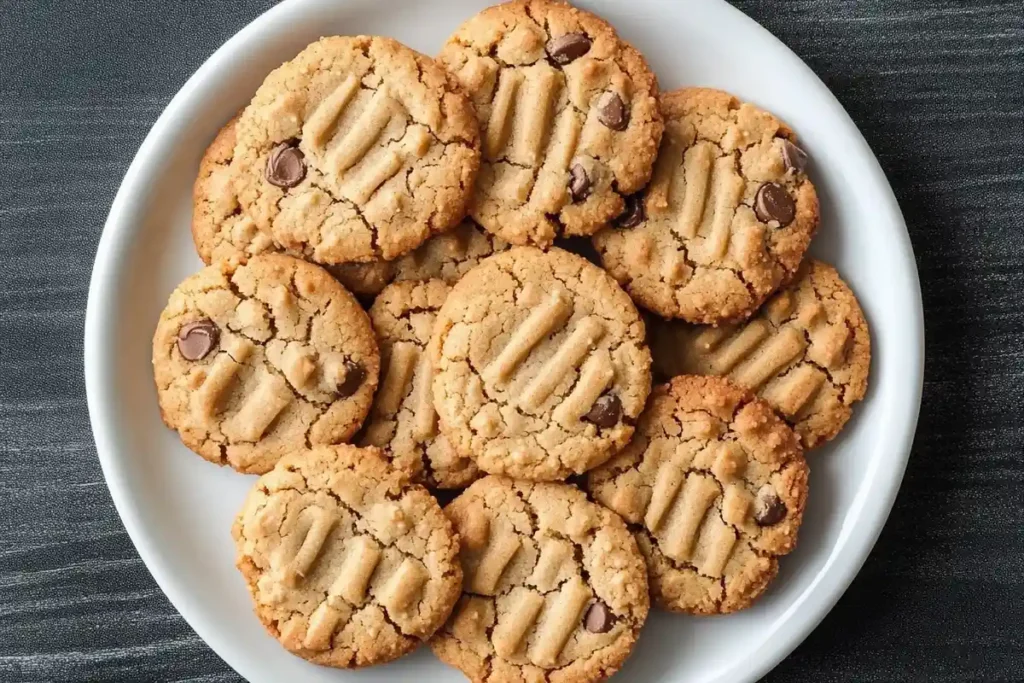
- Use Fresh Peanut Butter: Natural, creamy peanut butter without added sugar or oil produces the best results.
- Don’t Skip the Vanilla Extract: Even a small amount enhances the cookie’s overall depth of flavor.
- Measure Your Ingredients Accurately: Too much flour can dry the cookies, while too little makes them spread too thin.
- Add Chocolate Chips or Chopped Nuts: For an extra layer of indulgence, mix in chocolate chips, chopped peanuts, or even dried fruits.
- Rest the Dough Overnight (Optional): Allowing the dough to rest enhances the flavors and gives the sourdough tang time to develop.
Remember, baking is about balancing flavors and textures. A slight tweak here and there can turn a good cookie into an extraordinary one.
Creative Additions and Variations
While the classic sourdough discard peanut butter cookies are already amazing, why not have a little fun with variations?
- Chocolate Lover’s Dream: Add dark chocolate chunks or drizzle melted chocolate on top after baking.
- Nutty Delight: Mix chopped almonds, pecans, or cashews for extra crunch.
- Salty-Sweet Twist: Sprinkle flaky sea salt on the cookies before baking.
- Peanut Butter Sandwich Cookies: Spread a layer of peanut butter or chocolate ganache between two cookies.
- Spiced Cookies: Add a dash of cinnamon or nutmeg for a warm, cozy flavor profile.
These creative spins let you tailor the cookies to suit your taste—or impress guests with unique flavor combinations!
How to Store and Preserve Sourdough Discard Peanut Butter Cookies
Freshly baked cookies are amazing, but proper storage keeps them delicious for days. Here’s how:
- Short-Term Storage: Keep cookies in an airtight container at room temperature for up to 1 week. Add a slice of bread to the container to keep them soft.
- Freezing Cookies: Place cooled cookies in a single layer in a freezer bag. Store for up to 3 months. Thaw at room temperature before eating.
- Freezing Dough: If you want fresh cookies on demand, freeze unbaked dough balls. Bake straight from frozen, adding an extra minute to the baking time.
With these storage tips, you’ll never have to worry about stale cookies again!
Quick Troubleshooting Reference Guide
| Problem | Cause | Solution |
| Cookies are too dense | Overmixed dough | Mix just until combined |
| Cookies spread too thin | Dough too warm or not enough flour | Chill dough or add a tablespoon of flour |
| Cookies are dry | Overbaked or too much flour | Bake slightly less time and measure flour accurately |
| Uneven baking | Oven temperature inconsistency | Rotate the baking tray halfway through |
These quick fixes are your safety net—even seasoned bakers need a little troubleshooting now and then!
FAQs About Sourdough Discard Peanut Butter Cookies
Does sourdough go with peanut butter?
Absolutely! The tangy notes from sourdough discard beautifully complement the rich, nutty flavor of peanut butter. It’s a match made in baking heaven. The slight acidity from the discard balances the sweetness of the cookies, creating a more complex and well-rounded flavor profile. In short, peanut butter and sourdough are like old friends—they just click!
What uses a lot of sourdough discard?
Aside from making sourdough discard peanut butter cookies, there are plenty of creative ways to use up large amounts of discard:
- Pancakes and waffles
- Sourdough discard bread
- Crackers
- Muffins
- Brownies
These recipes reduce waste and add unique flavor and texture to everyday baked goods. The next time you have extra discard, think beyond bread—you might just stumble upon your new favorite recipe!
What happens if you don’t flatten peanut butter cookies?
Flattening peanut butter cookies isn’t just about aesthetics but even baking. Without flattening, your cookies might remain thick and undercooked in the center while the edges become overly crisp. That classic crisscross fork pattern also helps the cookies bake uniformly and creates a pleasant texture.
So, grab that fork and press gently. A little effort here goes a long way in achieving perfectly baked cookies.

